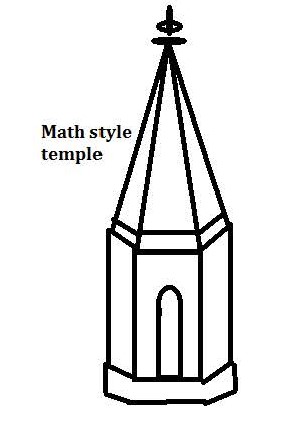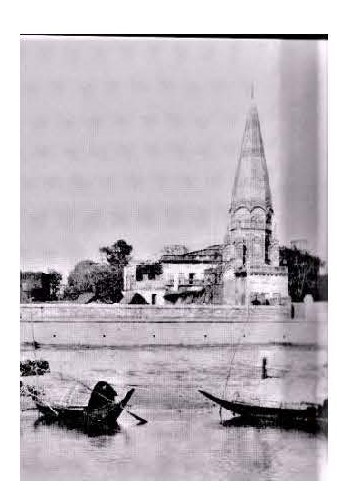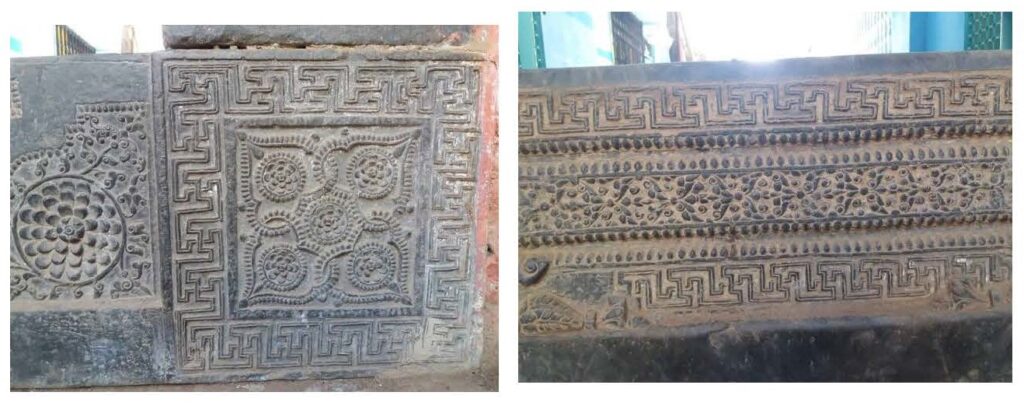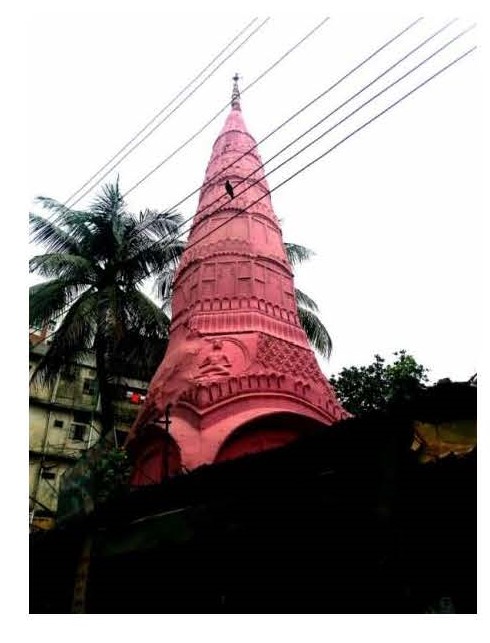Moth Styled Temples
Moth Styled Temples
Moth styled temples are advantageous for a construction of a tall structure within limited space and no special treatment is required to support the load of roof. Dhaka city is an important city of undivided Bengal. It is older than Kolkata; it got recognition as capital city in 1612 AD. This city, which is located on the bank of Buriganga, gradually increased its settlement in north direction. Some of its old structures are till existing in the southern part of the city.
Furthermore, most of the existing historical temples of Dhaka city belong to British period; only few were from Mughal era. Analysis of these temples reveals that ‘Moth’ is prominent architectural style in this city. It is also visible in Puran Dhaka.

Different Types of Moth Styled Temples
Shyambazar Shiva Temple
This temple locates at the southern point of Dhaka city on the bank of Buriganga River. It is an great example of Moth Styled temples. An old picture of this temple shows its beautiful geometric cone shaped roof. In addition to that, the room of this temple seems to be hexagonal shaped. Height of this structure might be 60-70 feet approximately.
Moreover, this structure was completely destroyed in 1971 by the military force of the then West Pakistan. At present, nothing of initial structure exists instead of a door frame. It is difficult to assess the establishment time of this temple. One poster from the bankside of temple indicates 1869 AD. But the famous artist Charles D’Oyly had drawn this temple in a painting of North Brook Hall. A local people demanded this temple is 400 hundred years old. This may be fabrication; we can assume it at least a 200 hundred years old temple of Dhaka city.


Ramna Kali Temple
Once upon a time, Ramna Kali Mandir was famous in whole Indian Sub-continent. About 500 years ago, Gopal Giri (A saint from Joshi Moth in Badri Narayan) established ‘Kripasiddhir Akhra’ (কৃপাসিদ্ধির আখড়া) in Ramna. Haricharan Giri, with assistance of Mughal army commander ManSingha and & Kedar Roy, established a Kali Temple here around 300 years ago.
Besides, the temple is another category of Moth Styled temples. A 120 feet tall pyramid shaped roof was visible over a two storied temple compound. It was probably the tallest temple of Dhaka city. Additionally, the roof was almost similar to Shyambazar Shiva Temple. Pakistani army destroyed this marvelous structure on 27th March, 1971.

JoyKali Temple
JoyKali Temple of Thathari Bazar is in the time of 1593 AD by Tulsinarayan Ghosh & Nara-narayan Ghosh. It is till existing in good condition being a temple of pre-Mughal era. There are two major structures namely Shiva Temple & Kali Temple. The 68 feet high tower, visible from distant areas, is mainly Shiva Temple. It is a moth with octagonal polygon shape. Some geometric design and human figures are seen on the top of this Moth. The main goddess, Kali, is established in a temple of Pancharatna architectural style. The small five Ratnas (dome or decorative structure over roof) are very close to the tall Shiv Temple.

Moth of Ram Saha
Ram Saha, a rich person from Amligola, Dhaka established ‘Sree Sree Radha Ballav Jiu Bigraha Temple’ in 1788 AD. Various religious festivals such as Jhulanjatra, Durgapuja, Banbihar etc. were celebrated with great festivity by the sponsorship of Ram Saha. A beautiful tall memorial monument was constructed after his death, which is known as ‘Moth of Ram Saha’.
Furthermore, one of the unique feature of this moth is that, there is an architectural blend of Moth and Ratna style. Apart from the central top, four small tops on two steps fulfill both criteria of being a Moth and Nabaratna(9 Ratnas) style. It is the only temple of Dhaka city having Nabaratna architectural style.

Sree Sree Laxmi Narayan Jiu Temple
There are two beautiful Moth located in Sree Sree Laxmi Narayan Jiu Temple of Tonuganj Lane, Sutrapur. Bihari Das Babaji is the main man to establish this temple here, but the actual age of these structures is unknown. Both of the structures show Panchratna style (adorned with 5 decorative top) though actually belong to Moth type architecture. Both of the octagonal Moths are at good condition till present.

Swamibag Temple
Rudra Tridandi Tripurlingaswami, a saint and religious Guru of Basak family in Dhaka, used to live in Fulbaria Railway Station Area. His followers made him to stay in Tikatuli area. The locality became popular as ‘Swamibag’ from the name of Swami Tripurlinga.
Presently, ISCON maintains this temple. All of the structures are new. There were only two Moth structures which belong to its establishment period. One of those was Shiva Temple and the other was Kali Temple. Besides, the epitaph of smaller temple reveals the establishment period as 21th Baishakh of 1824 Shak era, Sunday, 11th day of Krishnapaksha (dark sided lunar phase) indicating 1902 AD. These structures were demolished in 2020 for construction of a new temple.

